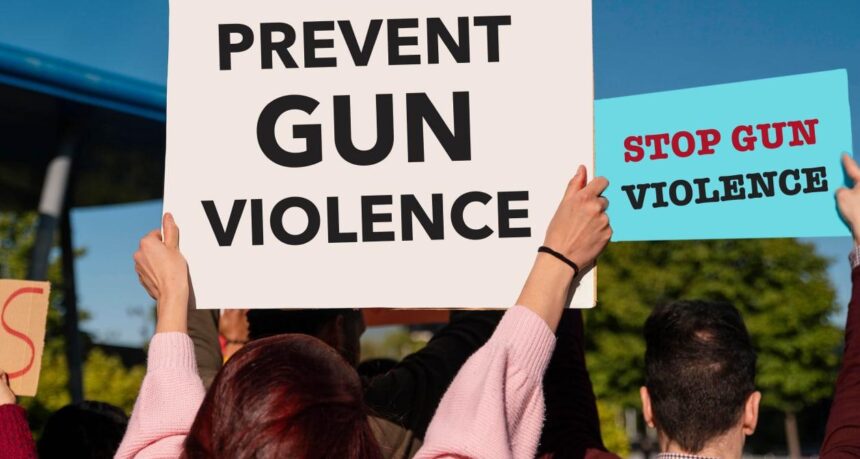Gun Violence Prevention: What’s Working, What’s Not, and the Legal Hurdles Ahead
As communities across the United States grapple with the escalating crisis of gun violence, the search for effective prevention strategies has never been more urgent. Efforts to curb the alarming rates of shootings and fatalities often clash with complex legal frameworks, leaving policymakers, advocates, and the public to navigate a contentious landscape. In this article, we delve into the initiatives that have shown promise in reducing gun-related incidents, examine those that have fallen short, and explore the legal barriers that complicate the implementation of potentially life-saving measures. As debates intensify in legislative chambers and community meetings, understanding what works, what doesn’t, and the role of the law is crucial for shaping our response to this pressing issue.
Strategies that Show Promise in Reducing Gun Violence
The battle against gun violence has sparked numerous strategies that show promise in curtailing this pervasive issue. Community-based interventions, such as violence interruption programs, have gained traction by engaging individuals most at risk of committing or experiencing gun violence. These programs employ trained mediators who leverage relationships with community members to de-escalate potential conflicts before they turn violent. Additionally, focused deterrence initiatives target specific groups by combining outreach with messages about the consequences of gun violence, while providing access to resources that promote non-violence and support rehabilitation efforts.
Innovative educational approaches also play a crucial role in reducing gun violence, especially among youth. For instance, schools and community organizations are implementing programs that emphasize conflict resolution and the dangers of gun possession. These initiatives, accompanied by parent and community workshops, foster a culture of accountability and safety. Furthermore, smart gun technology, which includes safety features that allow only authorized users to fire the weapon, shows potential in preventing accidental shootings and unauthorized use. Comprehensive efforts combining these strategies can create a multi-faceted approach to tackling the growing epidemic of gun violence in our communities.
| Strategy | Focus | Outcome |
|---|---|---|
| Violence Interruption | Community Mediation | Reduction in Conflicts |
| Focused Deterrence | Targeted Outreach | Decreased Gun Crimes |
| Conflict Resolution Education | Youth Empowerment | Safer School Environments |
| Smart Gun Technology | Safety Features | Fewer Accidental Shootings |
Barriers Created by Current Legislation and Their Impact on Prevention
Current legislation surrounding firearms often erects formidable barriers that hinder effective gun violence prevention. Laws that vary significantly from state to state create a patchwork of regulations that complicate enforcement and public understanding. For instance, while some states have enacted universal background checks and waiting periods, others maintain lax policies that allow for rapid purchases without thorough screenings. This inconsistency leads to challenges such as:
- Increased Access for High-Risk Individuals: Limited restrictions can enable individuals with a history of violence or mental health issues to obtain firearms easily.
- Confusion Among Law Enforcement: Differing laws can complicate the response to gun-related crimes, making it difficult for law enforcement to enforce regulations consistently.
- Barriers to Local Initiatives: Local jurisdictions often find themselves limited by state preemption laws that restrict their ability to implement stricter measures tailored to community needs.
Moreover, legislative inactions and loopholes facilitate an environment where the intent behind prevention efforts is undermined. For example, many gun violence prevention programs rely on funding that frequently faces budgetary scrutiny, leading to the discontinuation of critical initiatives aimed at education and outreach. This funding challenge is exacerbated by legislative proposals that prioritize the protection of gun rights over preventative health measures. As illustrated in the table below, a lack of consistent funding impedes progress:
| Funding Source | Impact |
|---|---|
| State Grants | Often limited and variable year-to-year |
| Federal Sources | Complicated application processes with low acceptance rates |
| Private Donations | Inconsistent and reliant on public interest |
Community-Based Approaches and Recommendations for Effective Action
Community-based approaches have shown promise in reducing gun violence, demonstrating that local engagement can lead to substantial change. Successful initiatives emphasize the importance of collaboration between law enforcement, non-profit organizations, and residents. Some key strategies include:
- Community Engagement: Initiatives such as community meetings create a platform for residents to voice concerns and work together on solutions.
- Peer Outreach Programs: Connecting at-risk youth with community mentors can provide guidance and deter violence.
- Data-Driven Interventions: Utilizing local crime data helps communities target specific issues and allocate resources effectively.
Furthermore, effective models often incorporate educational programs that address the root causes of violence, such as poverty and lack of opportunity. Empowering community members to take action fosters ownership and accountability. However, legal barriers remain a significant hurdle to implementing comprehensive gun violence prevention measures. These obstacles can include:
- Preemption Laws: Laws that prevent local governments from enacting stricter gun control measures hinder community initiatives.
- Restrictions on Funding: Limitations on federal funding for gun violence research reduce the efficacy of evidence-based approaches.
- Insufficient Legal Protections: Inadequate laws protecting community members involved in prevention efforts can discourage participation.
Future Outlook
As communities continue to grapple with the pervasive issue of gun violence, it is evident that solutions are multifaceted and often deeply polarized. While there are promising initiatives and programs demonstrating success in reducing firearm-related incidents, significant obstacles remain-particularly in the form of legislative limitations and societal resistance. Understanding what works, what does not, and the legal frameworks that shape our responses to this crisis is crucial for fostering meaningful change. As policymakers, advocates, and citizens engage in ongoing dialogues and efforts, addressing the root causes of gun violence while navigating the complex landscape of laws and regulations will be essential for creating safer environments for all. Moving forward, the commitment to collaboration and innovation in gun violence prevention strategies will be vital as we seek to turn the tide on this pressing public health challenge.









